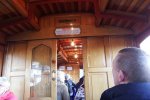Regarding laser cutting, I can only give you my experiences of 9 months of using an Atomstack A5, with an updated M50 dual diode laser head. I think this is available as the X7 or X9 as a package, with either an open frame or free arm version. The package includes a standalone controller instead of requiring a PC or MAC to be linked to the cutter as I do.
Makes Everyone a Master Crafter ATOMSTACK X7 PRO is an eye-protecting laser engraving machine with a laser power of 10W. It has an engraving area of 410x400mm and an all-aluminum alloy structure, which can be installed quickly. X7 Pro supports engraving materials including metal, 304 mirror...

www.atomstack.net
One thing to point out is that LED manufacturers do not correctly state the cutting power, so a 20W or 30W machine is more like 3-6W cutting power and only a dual diode module can exceed this, perhaps doubling to 10-12W. CO" lasers are usually rated in cutting power, so even a basic 50W CO2 is significantly more powerful - if a lot trickier to set up and use.
The 11W cutting power of the dual LED module means faster cutting with less surface burning. Common upgrades are to fit air assist - basically a small nozzle linked to an air compressor to feed a stream of air into the cut to remove burnt product, enabling cleaner and faster cutting.
Mine will cut 2mm ply in 1 pass at about 300mm/minute and will go up to 6-9mm, but quite honestly, the cut takes so long it's normally quicker just to engrave the outline and then whip out the jigsaw!
Software wise, Lightburn is the best available currently, and has some quite powerful 2D drawing tools built in as well. My Wisbech and Upwell coach was designed almost fully within Lightburn, with just a couple of pieces that needed the more advanced tools of a full CAD package to create.
More than happy to provide you with some cut samples to evaluate prior to splashing the cash.
I am also a Moderator on this Faceboook site if you want some more details on laser cutting. -
Atomstack Official Laser Engraving User Group



